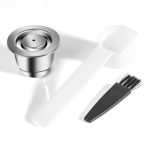Incense, with its fragrant allure, has captivated people for centuries. Whether you’re a seasoned incense aficionado or a curious newcomer, mastering the art of lighting incense is essential to fully appreciate its aromatic experience. Let’s delve into the process step by step.
Choosing the Right Incense
Before you even light your incense, consider the type you want to use. There are primarily three main types: sticks, cones, and coils.
- Incense sticks are the most common. They come in various lengths and scents.
- Incense cones are shaped like cones, as the name suggests. They often produce a stronger, more concentrated aroma.
- Incense coils are flat and spiral in shape. They burn slowly and steadily, releasing a continuous fragrance.
Once you’ve chosen your incense type, select a scent that complements your mood or environment. Some scents are known to promote relaxation, while others can boost energy or focus.
Essential Equipment
To light incense effectively, you’ll need a few basic items:
- A lighter or matches: This is obviously crucial for igniting the incense.
- An incense holder: This is a vessel designed to safely hold burning incense. It can be made of ceramic, metal, or other heat-resistant materials.
- A heat-resistant surface: If you don’t have an incense holder, a heat-resistant surface like a ceramic tile or metal tray can be used.

Lighting Your Incense
Now, let’s get to the heart of the matter: lighting the incense. The process is generally similar for sticks, cones, and coils, but there are some subtle differences.
Sticks:
- Prepare your incense holder: Place the incense holder on a stable, heat-resistant surface.
- Ignite the tip: Hold the incense stick horizontally and light the tip with a match or lighter. Let the flame burn for a few seconds until a small ember forms.
- Blow out the flame: Gently blow out the flame, leaving the ember glowing.
- Place the stick: Insert the burning end of the incense stick into the incense holder. Make sure it stands upright to ensure even burning.
Lighting incense cones:
- Prepare the incense holder: As with incense sticks, place the incense holder on a heat-resistant surface.
- Ignite the top: Light the top of the incense cone with a match or lighter. Let the flame burn for a few seconds until the entire top ignites.
- Place the cone: Carefully place the burning incense cone in the center of the incense holder.
Lighting incense coils:
- Prepare the incense holder: Again, place the incense holder on a heat-resistant surface.
- Ignite the coil: Light one end of the incense coil with a match or lighter. Let the flame burn for a few seconds until it catches.
- Form a circle: Carefully curl the burning end of the coil into a circle to create a stable base. Place the coil in the incense holder.

Safety Precautions
While lighting incense is generally safe, it’s essential to follow some precautions:
- Never leave burning incense unattended.
- Keep incense away from flammable materials.
- Burn incense in a well-ventilated area.
- Extinguish incense completely before leaving the room.
Enhancing Your Incense Experience
To truly savor the aromatic journey, consider these tips:
- Choose the right time: The atmosphere can significantly influence your incense experience. Consider lighting incense during meditation, relaxation, or while enjoying a quiet evening.
- Experiment with different scents: Explore a variety of incense scents to find your favorites. You might discover new scents that resonate with you.
- Combine incense with other senses: Enhance your experience by combining incense with soft music, dim lighting, or aromatherapy.
By following these steps and incorporating safety measures, you can confidently light incense and create a serene ambiance in your space. Remember, lighting incense is not just about igniting a stick or cone; it’s about embarking on a sensory journey that can enrich your well-being.

Choosing the right incense
Selecting the perfect incense is a personal experience, influenced by your mood, environment, and desired atmosphere. Let’s explore some factors to consider when making your choice:
Understanding Your Intent
- Relaxation and Meditation: Opt for calming scents like lavender, chamomile, or sandalwood.
- Energy and Focus: Choose invigorating aromas such as citrus, peppermint, or rosemary.
- Spiritual Practices: Consider incense traditionally used in your chosen spiritual path, like frankincense or myrrh.
- Home Fragrance: Select scents that complement your decor and personal taste.
Considering Scent Profiles
- Floral: Delicate and romantic, with scents like rose, jasmine, and ylang-ylang.
- Woody: Earthy and grounding, featuring sandalwood, cedarwood, and patchouli.
- Spicy: Warm and invigorating, with notes of cinnamon, clove, and cardamom.
- Fresh: Clean and uplifting, incorporating citrus, mint, and herbal scents.
- Sweet: Comforting and indulgent, with vanilla, coconut, and caramel notes.
Quality Matters
- Natural Ingredients: Look for incense made from high-quality essential oils, resins, and herbs.
- Avoid Synthetic Fragrances: These can be harsh and potentially harmful.
- Consider the Brand: Research reputable incense makers known for their craftsmanship.
Experiment and Discover
- Sample Different Scents: Many incense shops offer sample packs to help you explore various aromas.
- Combine Scents: Experiment with blending different incense sticks or cones for unique fragrance profiles.
- Trust Your Intuition: Ultimately, the best incense is the one that resonates with you personally.
Tips for Choosing
- Consider the Size of the Room: Stronger scents might be overwhelming in small spaces.
- Think About the Time of Day: Light, fresh scents are ideal for mornings, while warm, cozy aromas are perfect for evenings.
- Respect Allergies: Be mindful of others who might be sensitive to strong fragrances.

Choosing a suitable incense holder or burner
Selecting the right incense holder is crucial for a safe and enjoyable incense burning experience. The holder not only catches ashes but also adds to the aesthetic of your space. Let’s explore the different types of incense holders available.
Types of Incense Holders
- Stick Holders: These are the most common and designed specifically for incense sticks. They come in various materials like ceramic, metal, wood, and glass.
- Cone Holders: Shaped like small bowls or plates, these are ideal for incense cones. They often have a small indentation to hold the cone securely.
- Coil Holders: These holders are usually ceramic or metal and have a flat surface to support the coiled incense.
- Backflow Incense Burners: These unique holders create an illusion of incense smoke flowing downward. They require special backflow incense cones.
Factors to Consider When Choosing
- Material:
- Ceramic: Offers a classic and elegant look, available in various designs.
- Metal: Modern and durable, often made of brass or stainless steel.
- Wood: Adds warmth and natural beauty, but requires careful handling.
- Glass: Provides a clear view of the burning incense but can be fragile.
- Size and Shape: Consider the size of your incense and the space available. Some holders are designed for specific incense types.
- Aesthetics: Choose a holder that complements your decor and personal style.
- Safety: Ensure the holder is stable and heat-resistant. Some holders have feet to elevate them from surfaces.
Additional Tips
- Sand or Ash: For added safety and to prevent damage to the holder, you can place a layer of sand or ash in the bottom.
- Cleaning: Regularly clean your incense holder to remove ash and prevent buildup.
- Ventilation: Always burn incense in a well-ventilated area to avoid smoke accumulation.
Safety precautions to take while lighting incense
Incense can create a calming and aromatic atmosphere, but it’s essential to prioritize safety when using it. Here are some crucial precautions to follow:
Never Leave Burning Incense Unattended
This is the most important rule. Even a moment’s distraction can lead to a fire. Always keep a watchful eye on your burning incense. If you need to leave the room, extinguish it first.
Choose a Safe Location
Place your incense holder on a stable, heat-resistant surface. Keep it away from curtains, drapes, or any other flammable materials. Avoid placing it in areas with drafts that could tip over the incense holder.
Use an Appropriate Incense Holder
An incense holder is designed to safely contain burning incense and its ashes. Never burn incense without using a proper holder.
Ensure Proper Ventilation
Burning incense produces smoke, so it’s crucial to have good ventilation. Open a window or use a fan to circulate fresh air.
Keep Away from Children and Pets
Children and pets are curious by nature. Keep burning incense out of their reach to prevent accidents.
Extinguish Completely
When you’re finished enjoying the incense, make sure to extinguish it completely. Douse the embers with water or sand to prevent reignition.
Be Mindful of Allergies
Some people may be sensitive to incense smoke. If you have allergies or respiratory issues, consider using incense sparingly or in well-ventilated areas.

Additional Tips for Optimal Incense Burning
- Trim the incense stick: For incense sticks, trimming a small portion of the tip can help with ignition.
- Avoid drafts: Drafts can affect the incense’s burning time and aroma. Choose a calm location.
- Clean incense holders: Regularly cleaning incense holders prevents ash buildup and ensures optimal performance.
- Experiment with incense combinations: Some people enjoy blending different incense scents for unique aromatic experiences.










